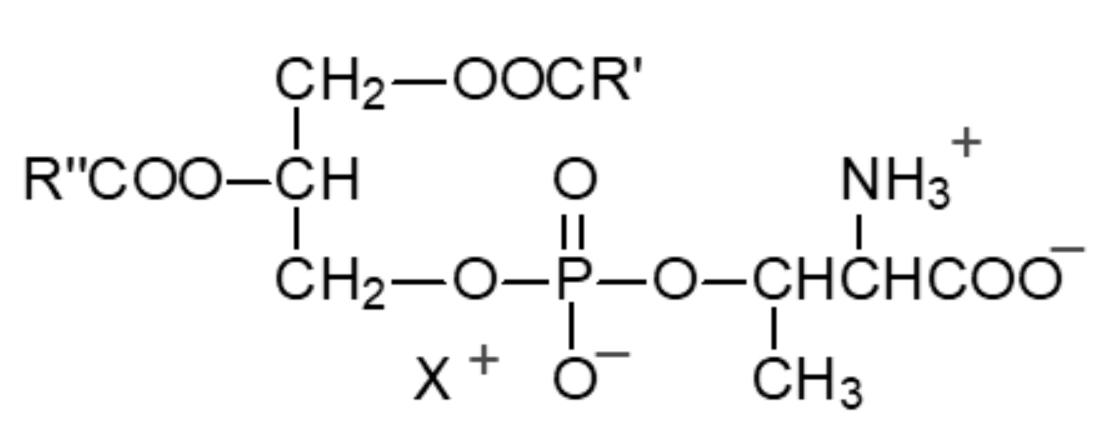
THREONINE GLYCEROPHOSPHOLIPIDS
Phosphatidylthreonine is a structural analog of phosphatidylserine, its contains a threonine instead of a serine head group.
 Phosphatidylthreonine
Phosphatidylthreonine
That new phospholipid was reported in hen’s egg (Rhodes DN et al., Biochem. J. 1957; 65: 526), fish muscle (Igarashi H et al., Nature 1958; 181, 1282), polyoma virus (Mark-Malchoff D et al., Biochemistry 1978, 17, 2684), cultured hippocampal neurons (Mitoma J et al., J Biol Chem 1998, 273, 19363), and parasitic protozoa but not in human tissues. It was shown to be abundant in Toxoplasma gondii where it plays a role in calcium homeostasis and virulence (Arroyo-Olarte RD et al., PLoS Biol 2015, 13e1002288).
Based on its structural similarity to phosphatidylserine, it has been hypothesized that phosphatidylthreonine may function in blood coagulation by interacting with coagulation factors (Hajeyah AA et al., J Lipid Res 2024, 65, 100484). That study revealed that this new phospholipid may contributes to the procoagulant membrane, and may support thrombosis in patients at elevated risk.
DISPERSIVE LIQUID-LIQUID MICROEXTRACTION
Lire la suiteDevenez membre et participez au développement de la Lipidomique au XXIème siècle.
S'inscrire